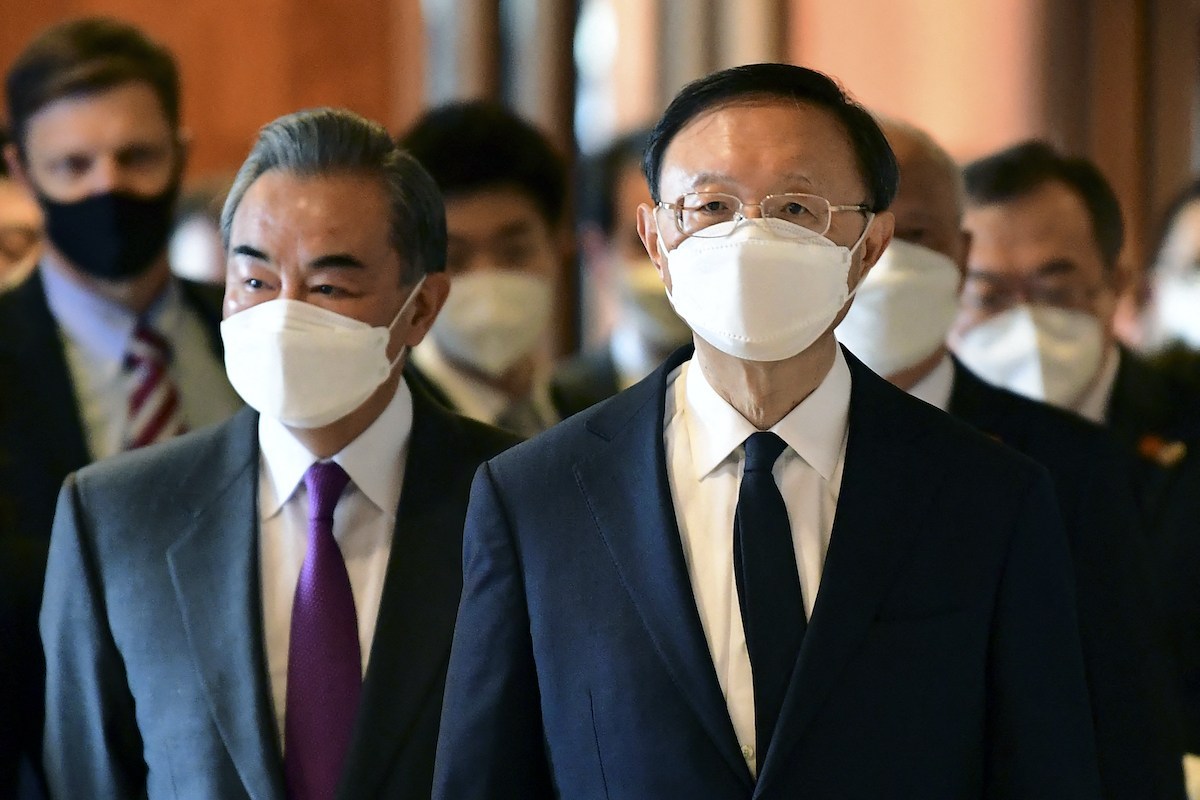[ad_1]
Yang Jiechi could be excused for being surprised.
China’s senior diplomat, a former ambassador to the United States and fluent English speaker – he once translated for US President George HW Bush during a visit to China – had heard that President Joe Biden’s November election victory heralded a return to a more “normal†US foreign policy.
Yet last week’s meeting between Yang, Foreign Minister Wang Yi, US Secretary of State Antony Blinken and National Security Advisor Jake Sullivan in Anchorage, Alaska, looked anything but normal.
Days before the meeting, the US State Department announced new sanctions on 24 Chinese officials for their role in eroding Hong Kong’s democracy. Then, when last weekend’s sit-down commenced, Blinken, a former deputy secretary of state known for professionalism and level-headedness, unloaded on his guests during two minutes of opening remarks.
Yang rebutted the accusations with a 16-minute reply, charging the US with hypocrisy and arrogance. Thus commenced a blistering back and forth between the two sides, played out before the press.
There is a second explanation for Yang’s surprise: the mood at the meeting and the events that preceded it counter a narrative that has been internalized in China and which Beijing has been telling the world.
According to this conventional wisdom, since the Global Financial Crisis of 2008-9, China’s rise and the decline of the US are historically determined trajectories. As Chinese President Xi Jinping exhorted in 2012, “the East is rising, and the West is declining.â€
By this logic, US attempts to challenge or check Chinese behavior are efforts to stop the inevitable reversal. The election of Donald Trump as US president confirmed that interpretation and his anti-China policies were the flailings of a Canute-type figure, struggling to hold back the tide of history.
Inescapable outcome
It’s a plausible reading of contemporary developments, but it mistakes policy missteps by the US for an inescapable outcome.
The Chinese reading of history is undermined by the growing popularity of those hardening policies: They have focused attention on the China challenge and won over adherents.
Yang, along with other Chinese foreign and security policy officials, must be surprised and alarmed by an emerging consensus about Chinese behavior and concrete steps taken before the Anchorage meeting.
Two weeks before the summit, Biden hosted the first summit of leaders of the Quadrilateral Security Dialogue, which includes Australia, India, Japan and the United States, at which they agreed to set up three working groups on vaccine diplomacy, emerging technologies, and climate change.
While China has criticized the Quad as a means to contain or suppress its rise, strategists and planners there know well that formal intensified security cooperation is unlikely. There is little chance of the Quad evolving into a regional security institution.
But the measures endorsed at the summit show that Quad nations understand that Indo-Pacific security is a multidimensional challenge and while military exercises are useful, the most immediate way to protect millions of lives and win hearts and minds is by providing one billion doses of coronavirus vaccine, as they promised to do.
The very next week, and days before the Alaska sit-down, Blinken and Secretary of Defense Lloyd Austin visited Japan and South Korea on their first overseas trip after taking office.
The meetings in both capitals went well and both alliances have been strengthened. Even more troubling is the message sent by the trip: Biden’s talk about multilateralism, consultations and prioritizing alliances isn’t campaign rhetoric, and the Indo-Pacific is a priority.
‘Strategic dialogue’
His administration is following through, matching words with deeds – and producing outcomes that must worry China. Earlier this week, the European Union followed Washington’s lead and imposed sanctions on four Chinese officials for alleged human rights abuses in Xinjiang.
Given this seeming reversal of historical tides and the flurry of activity, China was eager to resume talks with US counterparts, even if the optics were not good: Yang and Wang traveled to US territory to meet Blinken during a layover on his return.
Sensitivity to images was evident in the insistence that the Chinese officials were invited by Washington and the continued reference to a “strategic dialogue,†a characterization that Blinken flatly denied in comments to Congress.
Despite the initial fireworks, both countries acknowledged the value of the meeting when it was over. Yang called the conversations “direct, frank and constructive,†adding that they “helped boost understanding, although the two sides still have big divergences on some issues.â€
Blinken concurred, characterizing the dialogue as “tough and direct†and said participants were “able to have a very candid conversation on an expansive agenda.â€
Making progress on that agenda will be difficult. A Xinhua editorial published after the meeting reads like something from a time capsule, repeating the same bromides that Chinese diplomats have delivered for decades.
Similarly, Yang insisted that the two countries “deal with bilateral relations on the basis of no conflict, no confrontation, mutual respect, cooperation and win-win principles,â€Â Chinese diplomatic boilerplate.
It’s all Washington’s fault
Consistent with that consistency is the assertion by the Foreign Ministry that problems in the US-China relationship are the fault of the US, as “the previous US administration went against the trend of the times, and carried out highly erroneous anti-China policies, which seriously damaged both China’s interests and China-US relations …. China urges the US side to eliminate the impact of the previous administration’s wrong policy towards China and avoid new problems.â€
If this is Beijing’s position – that problems in the relationship with the US are all Washington’s fault – then the fireworks last week are a sign of things to come. The center of gravity in US policy toward China has shifted to the right.
Biden may want to work with China on a number of issues, but that cooperation will not come at the expense of broader US national security interests. China’s refusal to acknowledge that both countries have contributed to the deterioration of relations is a guarantee that the downward spiral will continue. Beijing should expect more surprises.
Brad Glosserman is deputy director of and visiting professor at the Center for Rule Making Strategies at Tama University as well as senior adviser (nonresident) at Pacific Forum. He is the author of Peak Japan: The End of Great Ambitions (Georgetown University Press, 2019).
[ad_2]
Source link














